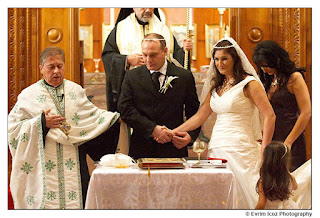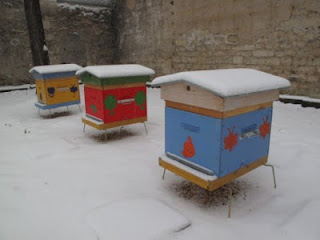Robert Foster was born in an area of South Africa called
Griqualand East in 1886, the year in which gold was discovered in what became
Johannesburg. He had a good
childhood, was a decent student, played sport, and became a good husband, a
loyal friend, and a loving father.
 |
| Robert Foster |
He also became South Africa’s most wanted man.
As is often the case, it started with little things –
resisting arrest when drunk, resisting arrest when apprehended on a train
without a ticket, and so on. In 1908 he moved to South West Africa
(now Namibia) where he was caught stealing donkeys. He was sentenced to 6 months prison in South Africa.
When he returned from a trip to England in 1913, he settled
in Johannesburg and became friendly with an American – ex-rodeo rider and
sharp-shooter, John Maxim. They
decided they should move up in the world.
They went to Cape Town and decided to rob the American Swiss
Watch Company with Robert’s brother Jimmy and another man, Jack Johnson. Wearing disguises of false beards and
moustaches, off they went and robbed the establishment of about £5000 of cash
and watches. After the heist,
Foster put the loot in one bag, his disguise and clothes in another, then put
both bags into a trunk, which he took to railway station to leave at left
luggage. Here he made his first
mistake. He didn’t have change for
the attendant and had to persuade him to take his luggage while he went to get
small change. Of course, this made
the attendant remember him.
The
second mistake was telling another resident in the lodgings at which they were
staying that they were actors. The
man was an actor himself and knew they were lying. When the four men disappeared on the morning after the
robbery, which was of course reported in the newspapers, he became suspicious
and spoke to the police.
The police searched his room and found evidence of the
robbery. They found the taxi
driver who took him to the station.
They spoke to the left-luggage attendant, who showed them what he had
left. And so very quickly, the
police had all the evidence they needed.
Three days later, Foster came to fetch his trunk and was
arrested and held in the Roeland Street jail. While awaiting trial, Foster married his long-time lady friend, Peggy – the ceremony being held in the prison.
 |
| Foster's wife, Peggy |
Maxim had evaded arrest, so the three of the four robbers on trial were
sentenced to 12 years hard labour and sent to Pretoria Prison. Foster's wife, Peggy, managed to gasp “I’ll
wait for you, Chummy,” before collapsing in court!
Now comes the interesting part. (The bizarre part comes later.)
Nine months later, Foster escaped from a hard labour
gang.
Together with his friend Maxim and another man, he then
started his reign of terror.
They tried to rob the National Bank in Boksburg, were
discovered by a night watchman, and eventually killed a barman from the hotel
across the road who came to see what was happening. An onlooker who tried to stop the escaping men was shot and
crippled for life.
Then the gang successfully robbed two post offices without
harming anyone.
Then they went after the Big Bottle Store. During the break-in they tripped an
electric alarm (in 1913!). A night
watchman alerted the police and the gang fled, killing one policeman. Later a policeman stopped Maxim,
searched him, and found a revolver on him. Maxim then shouted for help, Foster came out of the hotel at
which they were staying, and in the ensuing gunfire, Foster was hurt and
another policeman killed. The
three escaped on motorcycles.
 |
| The Wanted poster |
Needless to say, a massive manhunt ensued, and a little old
lady in one of the suburbs told the police that she thought the gang was
staying in a cottage next to her.
The police went, one was killed, and the gang escaped again.
It was at this stage in the saga that some bizarre events
took place. More of that later.
The gang abandoned the car and took refuge in some caves in
the hills on which Johannesburg is built.
The police found the car, and tracker dogs soon located the men.
 |
| Entrance to the cave |
The mouth of the cave was soon surrounded by police and
spectators. Obviously the three
men of the gang weren’t going to get away this time.
 |
| Police and spectators at the cave |
The next morning, a shot rang out from the cave. The third man, the police later found
out, had committed suicide. Eventually Foster came to the mouth of the cave and
asked the policeman in charge, Inspector Martin, to let him speak to Peggy and
his baby daughter. Foster promised
that once he had seen them, he and Maxim would surrender peacefully.
Martin eventually agreed and sent a police car to the
neighbouring town to fetch the two.
Peggy and her daughter went into the cave where Foster told her that he
and Maxim were going to commit suicide rather than be hanged.
“I’m going to stay with you, Chummy!” Peggy said.
Fosters parents were also outside the cave. He asked to speak to them. When he had done so, he gave them the
5-month old daughter. After they
left, three shots rang out. Maxim
and shot Robert and Peggy Foster and then himself.
The saga was over!
But not quite.
Inspector Martin was so upset that he had let Peggy go into the cave and
to her death that he later committed suicide.
And the bizarre events?
When the gang escaped from the cottage, the police set up
roadblocks all around Johannesburg.
At one, a doctor responding to a medical emergency failed to stop and
was shot dead and his wife wounded.
At another, an ex-Boer general, Jacobus Herculaas de la Rey, told his
chauffeur to drive through it. He
too was shot dead. It turns out he
had broken his oath to support South Africa and was on his way to start a rebellion among the South African troops, who were
supporting Britain in World War I.
 |
| General de la Rey |
So perhaps Robert Foster inadvertently prevented a civil war in South Africa, just as it was finding its feet after the Boer War!
Stan - Thursday
P.S.. I gleaned a lot of this information from the book Famous South African Crimes by Rob
Marsh.






























.jpeg)



























